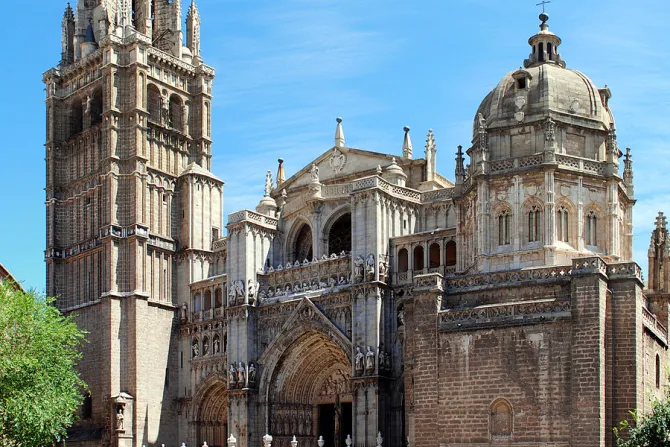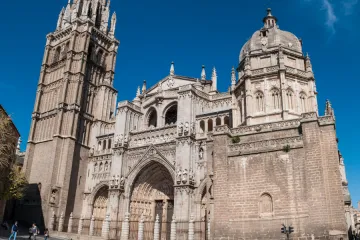Toledo, Spain, Oct 18, 2021 / 16:19 pm
Archbishop Francisco Cerro Chaves of Toledo carried out a penitential act Sunday at the city’s cathedral, after the filming of a music video which includes sensual dance scenes within the church.
The penitential act took place in the Toledo Cathedral Oct. 17 at the beginning of the opening of the diocesan phase of the synodal assembly convened by Pope Francis. The archbishop asked for forgiveness for "negligence in the care and respect for the church."
Spanish rapper C. Tangana released a music video for his song "Ateo" (Atheist) Oct. 7, made with Argentine singer Nathy Peluso. In the video, both perform sensual and provocative dances inside the cathedral.
Archbishop Cerro also referenced to “the abuse of vulnerable people” and “the sins against unity and communion in the Church, due to destructive, intentional or thoughtless and superficial criticism.”
In addition, the prelate asked forgiveness for "the immorality and corruption that condition and impel the individual into moral or physical degradation, dissolve family ties, and blur the true values of life."
Fr. Juan Miguel Ferrer Grenesche, dean of the Toledo Cathedral, resigned over the music video incident effective Oct. 16.
“The Dean expresses his request for forgiveness from the institution, on his own behalf and on behalf of the various elements of the cathedral chapter, insofar as they have had responsibility, for all the errors and faults that may have been committed by word, deed and omission in the recent events,” the Archdiocese of Toledo said Oct. 12.
The archdiocese also pointed out that "by internal regulations of the cathedral chapter, in effect for years, the money collected for extraordinary activities of the Cathedral is used for charitable works."
C. Tangana paid 15,000 euros ($17,000) for the use of the cathedral in the music video.
In a statement to the Spanish press reported by Europa Press Oct. 12, Fr. Ferrer said that "communication failures" complicated the case, and that he doesn’t regret his first statement, in which he justified the recording of the music video.
What he said at that time "is true and I explained the reasons why permission was given,” but he acknowledged that during the recording of the performance there were no representatives of the cathedral to realize "the things that later caused some people to be scandalized. That was a failure."
Fr. Ferrer also said that requests for permission for this type of recordings are not normally communicated to the archbishop, which "may be another failure that would have avoided some of the difficulty that we have experienced."
"I acknowledge all criticism and that I have been wrong, but when they correct me, I like it to be done with charity and respect," he said.
However, the priest said that for him this case is "water under the bridge, and what I want is for everyone to be serene and live in peace and that there not be any tension."
“I am convinced that the music of one kind of guy or another, from our faith, what we are looking for is to do good to people and I hope that after all this pain and this controversy we will all strive to do some good to one another,” he said.
Fr. Ferrer had said Oct. 8 that “the video presents the story of a conversion through human love. The lyrics of the song are precise: ‘I was an atheist, but now I believe, because a miracle like you had to come down from heaven.’”
(Story continues below)
In addition, the dean criticized "certain attitudes of intolerance," to which, he said, "is opposed by the understanding and acceptance of the Church, as manifested in the final sequences of the video."
The Toledo archdiocese said Oct. 8 that the archbishop “was absolutely unaware of the existence of this project, its content and the final result,” and that he “deeply regrets these events and disapproves of the images recorded” in the cathedral.
The Archbishop of Toledo asked "humbly and sincerely for forgiveness from all the lay faithful, consecrated people and priests, who have felt justly hurt by this misuse of a sacred place."
"From this moment, the archdiocese will work to review the procedure followed to prevent something similar from happening again," the statement added.
"To do this, a protocol for the recording of images for public broadcasting in any church in the archdiocese will be immediately drawn up.”
About 30 people gathered outside the cathedral Oct. 10 to pray a reparative rosary.




